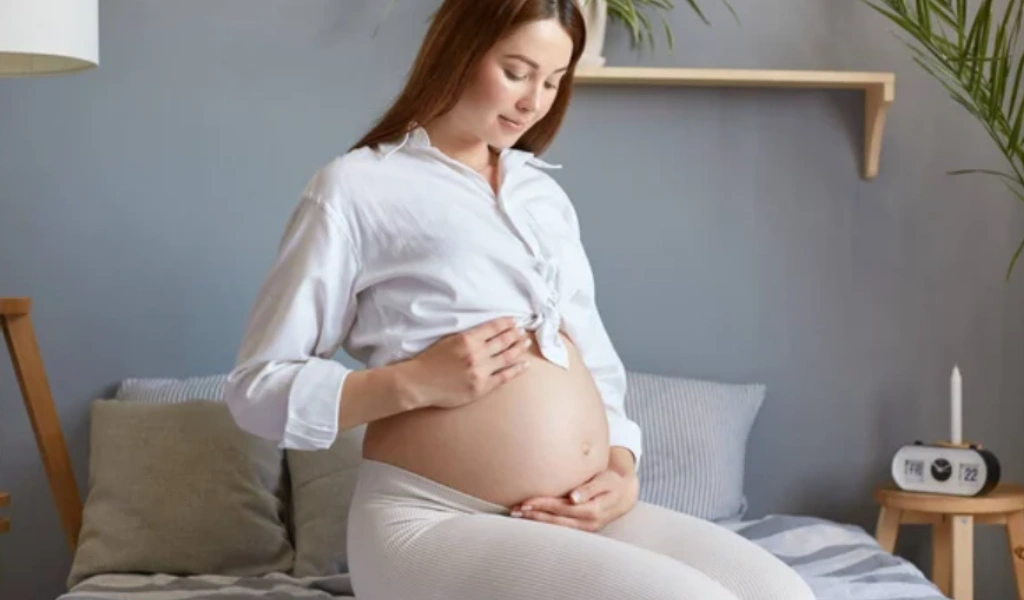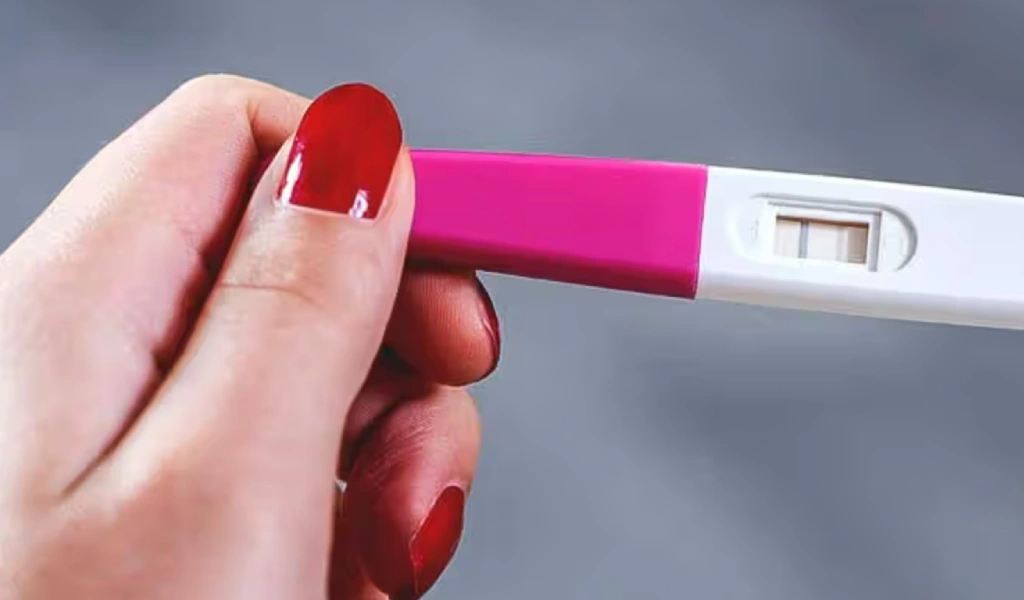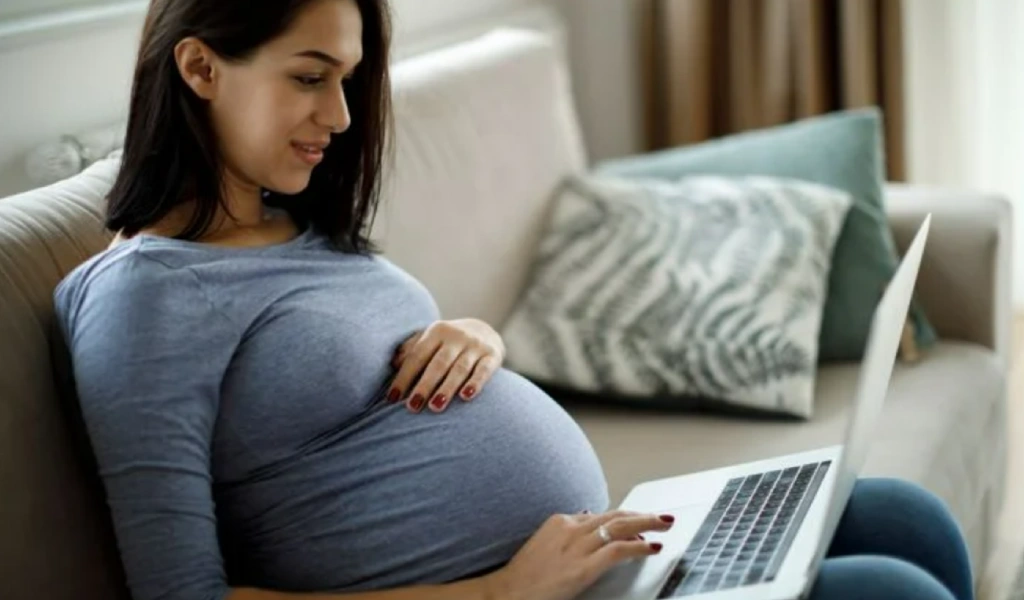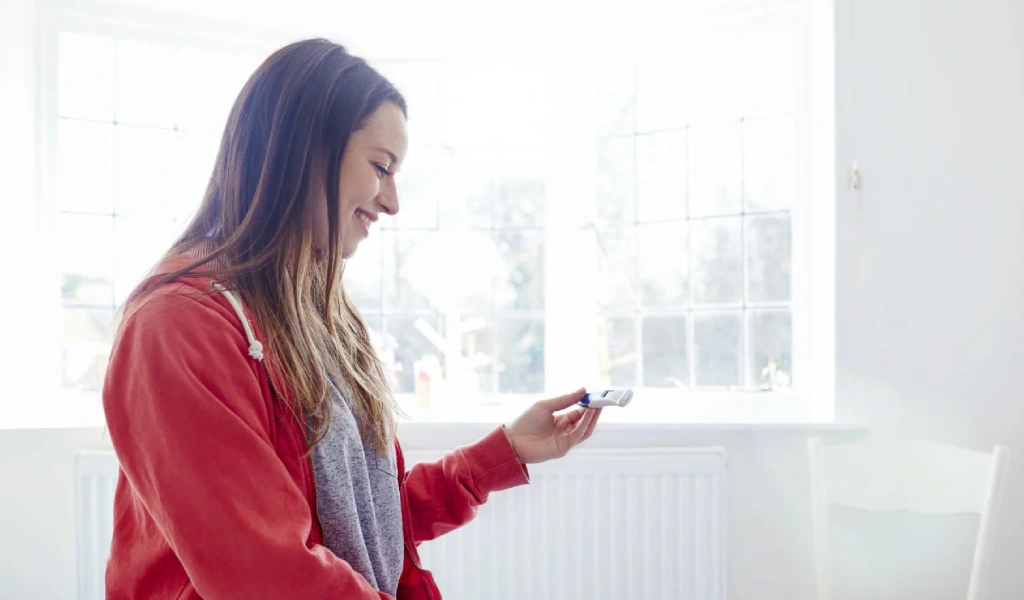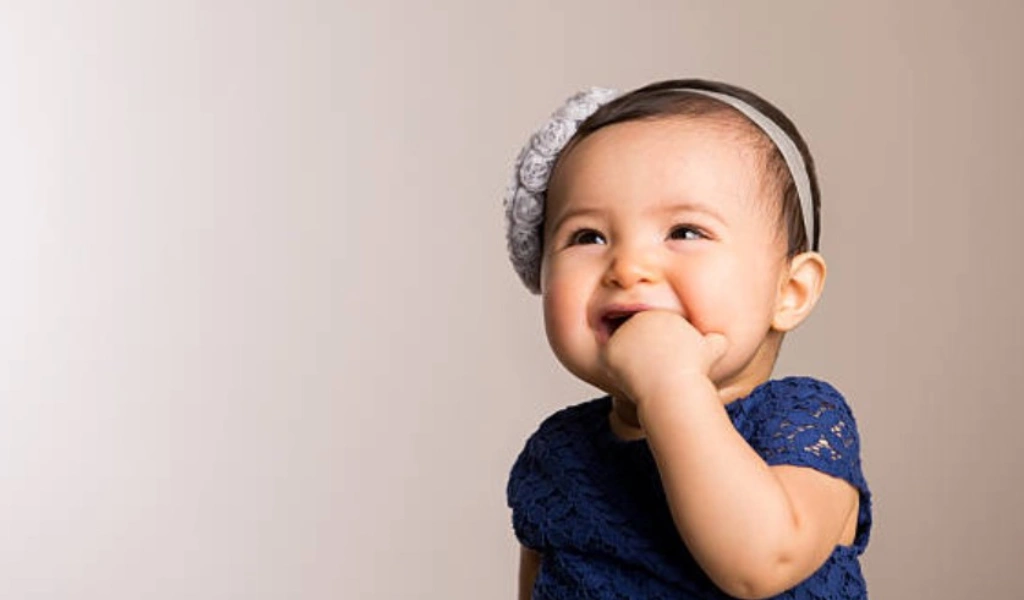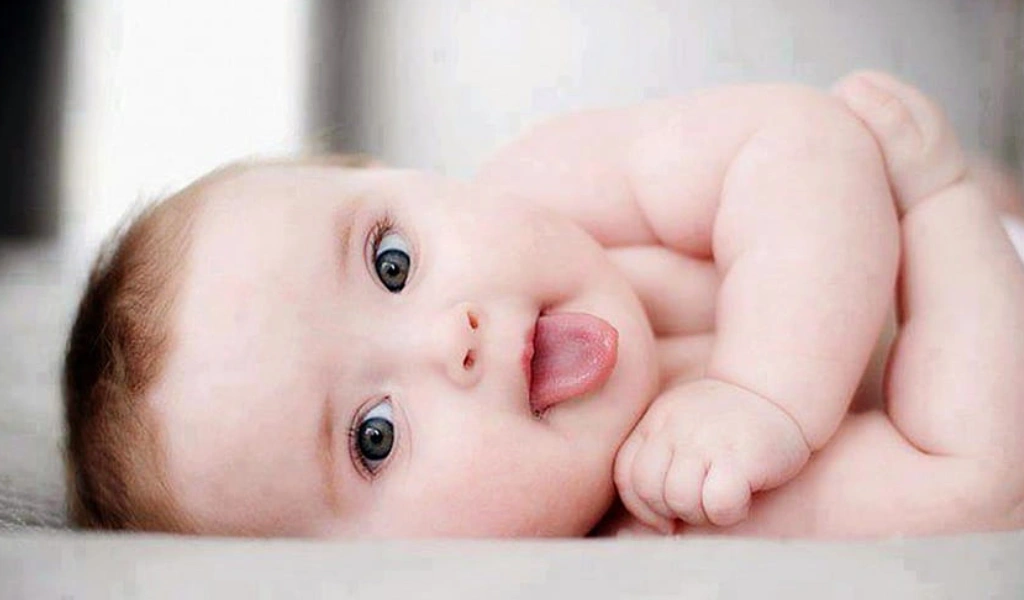Every woman is unique, as is the pattern of their baby bump growth.
If you’ve recently discovered that you’re pregnant, you’re likely eager to see your growing baby bump. So, when can you expect to start showing during pregnancy? This article has the answer to that question and more.
For any pregnant woman, whether it is her first pregnancy or she is expecting another child, seeing her baby bump is a thrilling moment. It represents the first physical indication of pregnancy and the journey into motherhood.
Keep on reading this article ‘When Does the Baby Bump Start to Show in Pregnant Women?’ to find out more about the timeline for when your baby bump becomes visible during pregnancy, the growth and development of your belly, the amount of visible bump during each trimester, the implications of showing a bump early, and whether it is worrisome if your bump has not yet appeared.
When Does Your Baby Bump Start Showing During Pregnancy?
There is no specific time when you can predict when you will begin to show your pregnancy bump.1 Like other pregnancy symptoms, the timing and month of when you start showing your baby bump will vary for each woman.
Some women may not show until later in their second trimester, while others may start showing as early as the end of their first trimester. Several factors can affect how late or early you start to show while pregnant.
1. Swelling in the abdomen
Some women may experience bloating that causes their waist to feel slightly tighter, and this may occur as soon as they discover they are pregnant. Although it is possible to start feeling bloated within the first few weeks of confirming pregnancy, it is not the same as visibly showing a baby bump.
2. Whether it’s your first time being pregnant or if you’ve been pregnant before
If you are expecting your first child, you will probably begin to notice a visible bump around weeks 16-20 of your pregnancy. Women who have been pregnant before may start showing sooner than first-time mothers due to their uterus and abdominal muscles already being stretched from previous pregnancies.
This can cause them to show earlier in their pregnancy compared to first-time moms.
3. The speed at which your stomach expands
Some mothers may experience their stomach expanding before reaching the 12th week of pregnancy. This could be attributed to factors like gas, bloating, or constipation, rather than just the baby bump itself.
These are common pregnancy symptoms that can lead to the stretching of the belly, even if the baby bump is not visibly apparent.
4. Pregnant with twins, triplets, or multiple babies
If you are pregnant with twins, triplets, or multiples, you may begin to display your baby bump earlier than others. This is because women expecting multiple babies typically start showing earlier than those carrying just one baby.
5. The size of your developing fetus
The timing of when you begin to show during pregnancy can be influenced by the size of your unborn baby. If your baby is smaller than average, you may start showing up later in your pregnancy.2 Conversely, if your baby is larger than average, you may show your baby bump earlier than others.
6. The outfit you select
The clothing you decide to wear during pregnancy will influence when your baby bump becomes noticeable.
If you opt for loose and comfortable maternity clothes, particularly ones that are roomy around your stomach, your bump will take longer to show. Conversely, wearing tight and form-fitting clothes, especially around your stomach, will make your bump appear earlier than it would on other women.
Exploring the Progression and Growth of Your Pregnancy Belly
- During the initial phases of pregnancy, the uterus will have a shape similar to that of a pear.3
- Throughout the first trimester of your pregnancy, your uterus will slowly transition in shape to become rounder, eventually growing to the size of a grapefruit. As your uterus expands, your baby bump will become more prominent.
- Despite the appearance of a baby bump, it is important to note that your baby is not actually that large at this stage. Before the 12-week mark, your developing baby is still considered an embryo and does not require a significant amount of space for growth and development.
- Although you may notice an increase in your abdominal area, it is not due to your baby’s growth but rather your uterus growing thicker to support the baby adequately.
- By the time you reach around 16 weeks of pregnancy, your uterus will expand to accommodate your growing baby, resulting in the appearance of a baby bump.
How noticeable your baby bump is during the first trimester?
Different women will begin to display their pregnancies in various ways depending on different factors. It is not necessary to worry about whether or not you are showing enough.
While some women may begin showing as early as the first trimester, others may not show until the middle of the second trimester. Certain conditions may cause your pregnancy bump to become visible in the first trimester.
1. Experiencing constipation or feeling bloated
- Experiencing bloating or constipation is a common issue for many pregnant women.4 If you are feeling bloated or constipated, you may also notice an increase in gas.
- During pregnancy, your digestive system may not be as efficient as before, leading to fluid retention and gas accumulation in the body, causing your abdomen to appear swollen.
- The rise in pregnancy hormones, particularly progesterone, can contribute to the sensation of bloating. Elevated progesterone levels can cause the muscles in your body to relax too much, which in turn can slow down your digestion. While this will not adversely affect your baby’s health, the baby will still receive the necessary nutrients, it can lead to constipation or a bloated belly. Constipation may create the appearance of a noticeable baby bump, even if it is not the case.
2. Reduction in the tone of your muscles
- If the muscles in your abdomen are well-defined or firm, your stomach may not protrude as quickly as it does for other women.
- If the muscles in your abdominal area are not strong, you will begin to show earlier than those with stronger muscles.
3. In the event of a future pregnancy
- If you are pregnant again, the muscles in your abdominal area may already be relaxed and loose.
- Additionally, the muscles in your uterus will be further extended due to a prior pregnancy, causing your baby bump to appear sooner compared to first-time mothers.
4. Putting on too much weight
- If you were already overweight or gained a significant amount of weight before becoming pregnant, you will likely start showing earlier compared to women who have a healthy weight or are underweight.
- Excess fat can cause your stomach muscles to loosen, leading to an earlier and more noticeable baby bump.
5. If you have a small body size
- Many women believe that if you have a small body, you will start showing a baby bump sooner than those who are heavier.
- Due to your slim body, you have very little fat, so any weight gain, particularly in your abdomen, will be noticeable.
6. The wrong date
- Your doctor may have made errors in calculating your pregnancy age, possibly due to factors such as an incorrect menstrual cycle date. If you were not actively trying to conceive or were unsure of your last menstrual cycle date, the doctor’s estimate of your pregnancy stage may be inaccurate. This could mean that you are further along in your pregnancy than what the doctor has indicated.
- If you believe this is a possibility, you should discuss it with your doctor. Your doctor will probably recommend having an ultrasound to determine the accurate gestational age. After confirming the correct date, your doctor can provide appropriate assistance when needed.
7. Multiple babies
- If you are pregnant with twins or more, you will begin to display signs of pregnancy early on in the first few months of your first trimester.
- Your doctor may suspect that your uterus is expanding more rapidly than expected for the stage of your pregnancy due to the possibility of carrying more than one baby.
How Much Will You Show In Your Second Trimester?
Regardless of your body type or weight, most women will begin to display a baby bump in the second trimester of their pregnancy if they don’t show up earlier.
- In the second trimester, you may start noticing changes in the size of your abdomen.
- Symptoms like morning sickness and tiredness will lessen and your belly may begin to stick out.
Liza, a first-time mother and blogger, documents the growth of her baby bump during the second trimester. According to her, she has noticed that her body is transforming such as weight gain, slight changes in her skin tone, as well as various physical and mental changes. The baby bump has become noticeable during this time. She used to constantly ask her husband if her baby bump was showing but now accepts and embraces the changes as a sign of a positive and mature sense of responsibility.
How Much Will You Show In Your Third Trimester?
During the third trimester, most women proudly display their baby bumps. Yet, there are instances where some women may not show as prominently. Let’s explore the reasons behind this potential scenario.
- If you reach your third trimester and have not yet started showing a baby bump, there is no need to worry. Your doctor will address any possible concerns, so it is important to trust their judgment and not stress about it.
- Many pregnant women may not begin to display a visible baby bump until the later stages of the third trimester. The lack of a visible bump does not indicate any issues with your baby’s size or development.
- In certain situations, the appearance of your baby bump may be delayed until the later stages of your third trimester as a result of your particular body shape.
- One factor that may delay the appearance of your baby bump until the late third trimester is the level of weight gain during pregnancy. Regardless of your body shape before or during pregnancy, failing to gain the necessary weight could result in a delayed bump.
- At times, your doctor might determine that the lack of a visible baby bump is due to an inaccurate calculation of your pregnancy’s age. In such instances, your doctor will recommend an ultrasound to accurately determine the age of your pregnancy. If the initial prediction is incorrect, your doctor will provide you with the accurate age and adjust your care plan accordingly. Even if the prediction was accurate but you are still not showing, it is still possible to have a healthy baby. Your doctor may increase monitoring to ensure proper growth of the baby.
What Does It Mean If Your Baby Bump Is Showing A Little Early?
If the belly starts to become noticeable earlier than expected, it is not necessarily a cause for concern. However, several factors could contribute to this.
- You may be experiencing water retention. During pregnancy, your body may retain extra fluids causing a bloated and swollen appearance. This can lead to the appearance of a noticeable baby bump.
- After becoming pregnant, your body begins to undergo various changes to prepare for the baby. Your body will start adapting to protect and provide nourishment for the baby. During this time, your body starts storing extra fat to ensure the baby’s comfort. These changes result in various alterations to your body over time.
- You might be having gas and bloating in your body, leading to a distended stomach that feels firm to the touch.
- Pregnant women often experience constipation as a common problem. When constipated, women may feel like their stomach is hard and bloated, resembling a baby bump due to a buildup of waste in the body.
Should It Be A Cause Of Concern If Your Bump Is Not Showing Yet?
It is common for your pregnancy baby bump to become noticeable later on, and if you find that you have surpassed the expected weeks without showing, there is no need to be concerned. Here are some factors to consider when determining whether your bump is visible earlier or later.
- At times, the positioning of your uterus may be different from the usual location over the pelvic bone, causing a delay in the appearance of your baby bump. There is no need to be concerned, as this is a common and normal occurrence. In certain instances, your uterus might be retroverted, indicating a backward tilt, resulting in a later display of your baby bump. Conversely, if your uterus is anteverted, meaning it is tilted forward, you may show your baby bump earlier than other pregnant women.
- If you are arriving late for appointments, it doesn’t necessarily indicate that your baby is underdeveloped or not growing properly. The doctor will monitor the size of your belly and bump towards the end of the second trimester and the beginning of the third trimester to ensure your baby is progressing appropriately.
- The amount of weight you gain will impact when your baby bump becomes visible.
- If you have gained a significant amount of weight while pregnant or were overweight before becoming pregnant, you may begin showing sooner. On the other hand, if you have excess fat around your stomach, your baby bump may not be noticeable right away as it may blend in with the surrounding body fat.
- If you did not gain a lot of weight during your pregnancy or if you were underweight when you got pregnant, even a slight change in your abdomen will cause your bump to be visible. This means you may show a small baby bump earlier than other women who are at the same stage of pregnancy as you are.
- If you have undergone any surgery in the abdomen previously or if your abdominal muscles are stretched or loose, your baby bump might appear sooner compared to other women at the same pregnancy stage as you.
- Age can also influence when a woman will start to show her baby bump. Older women may start showing earlier than younger women at the same stage of pregnancy due to looser and more stretched muscles. During pregnancy, the already loose muscles will stretch even more, causing the bump to be more noticeable.
- At times, genetics can influence when you begin to display your baby bump. If your mother or sister showed up early during their pregnancies, likely, you will too. Similarly, if the females in your family displayed their baby bumps later in their pregnancies, you may also show later compared to other women at the same stage of pregnancy.
Once you find out you are pregnant, you may have many questions, one of which may be when pregnant women typically start showing. The timeline for when a woman’s baby bump becomes noticeable can vary.
While some women may begin to show signs of a bump in the first trimester, others may not show until the second. Factors such as bloating, previous pregnancies, and the size of the fetus can impact the size of the bump.
Keeping track of the fetus’ size each week throughout pregnancy can give you an idea of when you might start to show. It is important to remember that the size of the bump is not necessarily an indication of the baby’s health.
Regular checkups are essential to monitor your pregnancy progress, physical changes, and the growth of the fetus accurately.
Key Pointers of ‘When Does the Baby Bump Start to Show in Pregnant Women?’
- The way women perceive their pregnancy bump can change throughout different stages and months.
- Several factors, such as bloating, how quickly the stomach expands, the presence of multiple babies, the size of the fetus, and the type of clothing being worn, can impact when a pregnant woman’s belly starts to show.
- Typically, first-time mothers start showing a baby bump around 16 to 20 weeks into their pregnancy.
- Women who have been pregnant before may start showing their bump earlier.
- Pregnant women expecting twins or multiples are likely to show a bump sooner than those carrying just one child.
- The timing of when a pregnancy bump appears can also be impacted by the size of the developing fetus.

